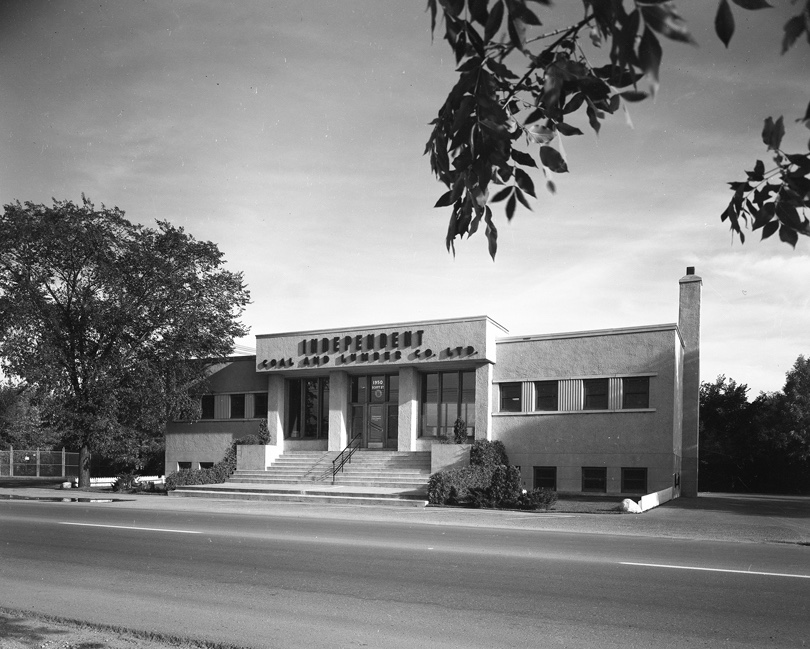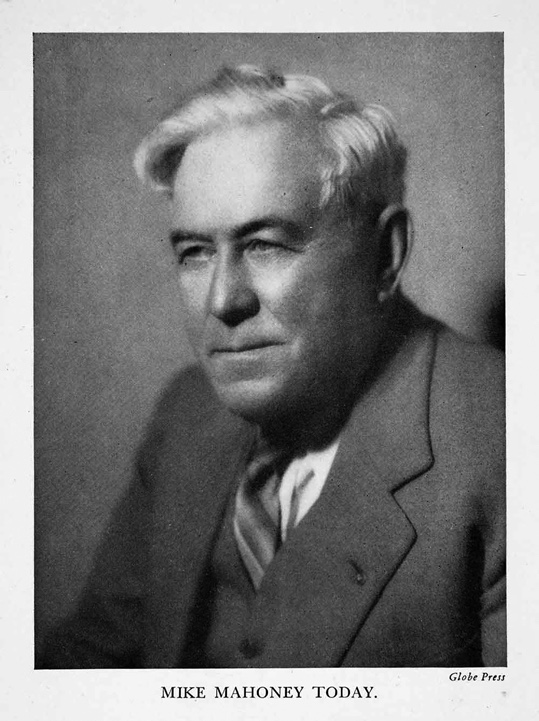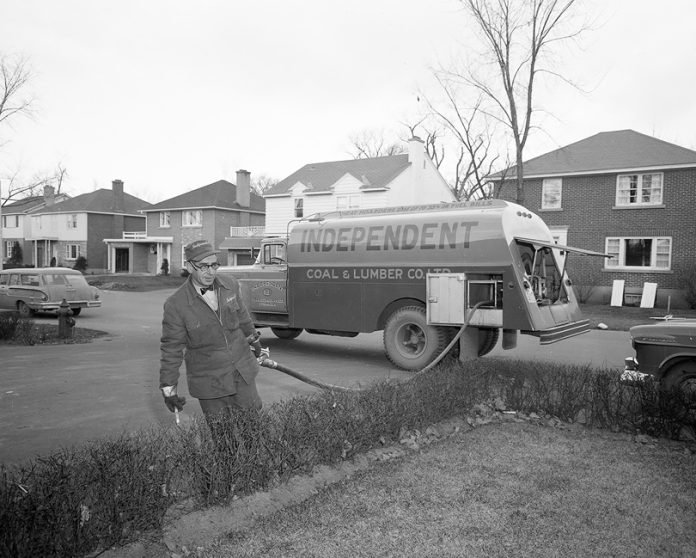By Dave Allston
Twenty years have passed since ground was broken for the Metropole building. At the time it was Ottawa’s tallest residential building and the most iconic in Westboro. It ultimately became the harbinger of Scott Street’s future.
But long before the Metropole the site was home to Independent Coal and Lumber. This significant player in Ottawa’s industrial history became part of Westboro’s story because of the Yukon Gold Rush.
It began during the First World War, when access to coal became a west end issue. Westboro had ballooned in size over 15 years, but infrastructure lagged.
When the war put further strain on coal, supply prices skyrocketed. Delivery costs made things especially difficult for “suburban” Westboro. Not to mention M.N Cummings, the community’s lone coal dealer who was accused of “holding up soldiers’ wives for their last dollar.” More likely, his supply sources had dwindled.
In October 1919, the Independent Coal Company, located at Bank and Queen, was sold to Michael Ambrose Mahoney, also known as “Klondike Mike.”
Mahoney was known across North America for his gold rush rags-to-riches story. The Buckingham teen worked at lumber camps in Gatineau and Madawaska in the 1890s before heading off to Yukon in 1897 with a railway ticket, a suitcase and three dollars.
After failing to get a stake in Skagway, Dawson City, Dominion Creek, Nome and Fairbanks, he was close to giving up. But then he struck a claim that yielded $175,000 in gold, the largest shipment ever handled by an individual miner.
Mahoney returned to Ottawa in 1912 and partnered with George A. Rich two years later. They had staked Klondike claims side by side, and together they started Mahoney and Rich, Ltd., a team of excavators and building contractors which also handled trucking with their large fleet.
Mahoney soon saw an opportunity in Westboro with its booming population and a desperate need for coal and lumber. He purchased Independent Coal and became its president and general manager, envisioning a massive expansion into the west end.
In April 1920, Mahoney announced that he had purchased 40 acres of unused land for $20,000 from the Heney family. With his newly acquired land north of Scott Street in Westboro, he wrote up plans for a $140,000 plant. It included a sawmill, so Mahoney’s coal company could run a retail lumber business as well. He brought in his brother Corbett to oversee the lumber side of the operation.
Starting in the fall of 1920, Independent could handle more than 10,000 tons of coal per year for a Westboro and Ottawa West market that needed 15,000 tonnes annually. He also negotiated with the Canadian Pacific Railway for a siding off their line to enable shipping, and with Nepean Township to build Clifton Road to connect to Richmond Road. It was one of the first paved streets in Westboro.
Mahoney’s business was an instant success, and worked alongside smaller Westboro firms to provide building materials for the booming village.

In 1935, the firm became known as the Independent Coal and Lumber Company. By that time, the company had contracts to supply up to 50,000 tons of coal for federal government buildings in Ottawa.
The Independent Coal and Lumber Company was emblematic of the importance of industry in the early days of Kitchissippi. Most of its workers lived in the area, and many houses in surrounding neighbourhoods were not only built with materials from Independent, but then kept warm by its coal.
In 1947, Klondike Mike stepped down, his brother Corbett became president, and Corbett’s sons Joseph, Thomas and Clifford joined the firm. Corbett resigned two years later, leaving his sons in full control.
By 1952, Independent was a powerhouse in Ottawa business. It bought out Mahoney and Rich, and could provide a complete home building and maintenance service. The company motto became “We Dig Them, We Build Them, We Heat Them.”
The company had a Westboro factory, two sawmills, three lumber yards, a dedicated showroom, 50 trucks, and more than 200 employees on an annual payroll of over $350,000. They had approximately two million feet of lumber, owned their own timber rights in Quebec, and had the largest fuel storage and operations in the area.
By 1952, with housing building up around Westboro Beach and north of Island Park Drive, Independent got involved in local development. It parcelled off the north portion of their property and helped form Riverside Terrace Ltd., a $1.2M project that built 23 apartment complexes around Lanark Avenue.
In 1964, the subdivision owners shared plans to replace the apartment blocks with Island Park Towers, a $20 million condo project. Demolition of the first 10 buildings began in the fall of 1966 and the new twin towers were ready for occupancy the following year.
By the late 1960s, natural gas and heating oil had superseded coal for home heating. The Independent coal plant was in decline, and the property value too high to ignore. In March 1968, Mahoney Holdings Ltd. sold the Westboro property to the Sun Life Assurance Company of Canada for $250,000. The buildings were demolished throughout the fall of 1970, leaving behind a grass field that would remain unused for 30 years.
The site finally came alive in August 2000, when Minto acquired a large block of land for $4.2 million and announced plans for a new 32-storey condo and townhouses.
Minto wanted one tall, slim building, rather than a wide structure which would block out river views. Neighbours for the most part agreed, which helped speed approval. Ground breaking occurred in January of 2003, and the first occupants moved in June 2004.
The Mahoney legacy remains. In 1987, a new City park at Lanark and Latchford was given the name “Mahoney Park” in recognition of the family’s economic role and community volunteer work.

